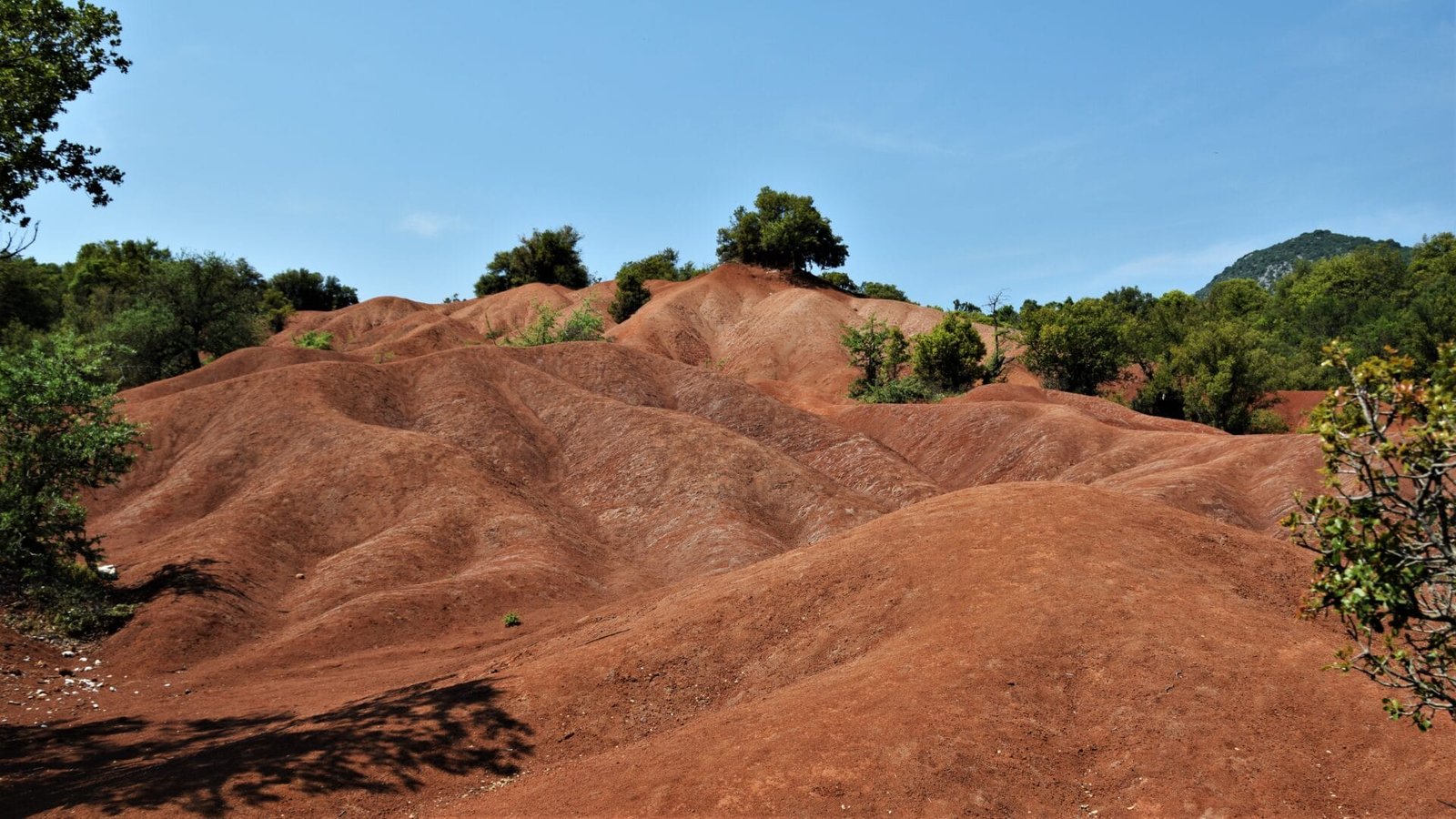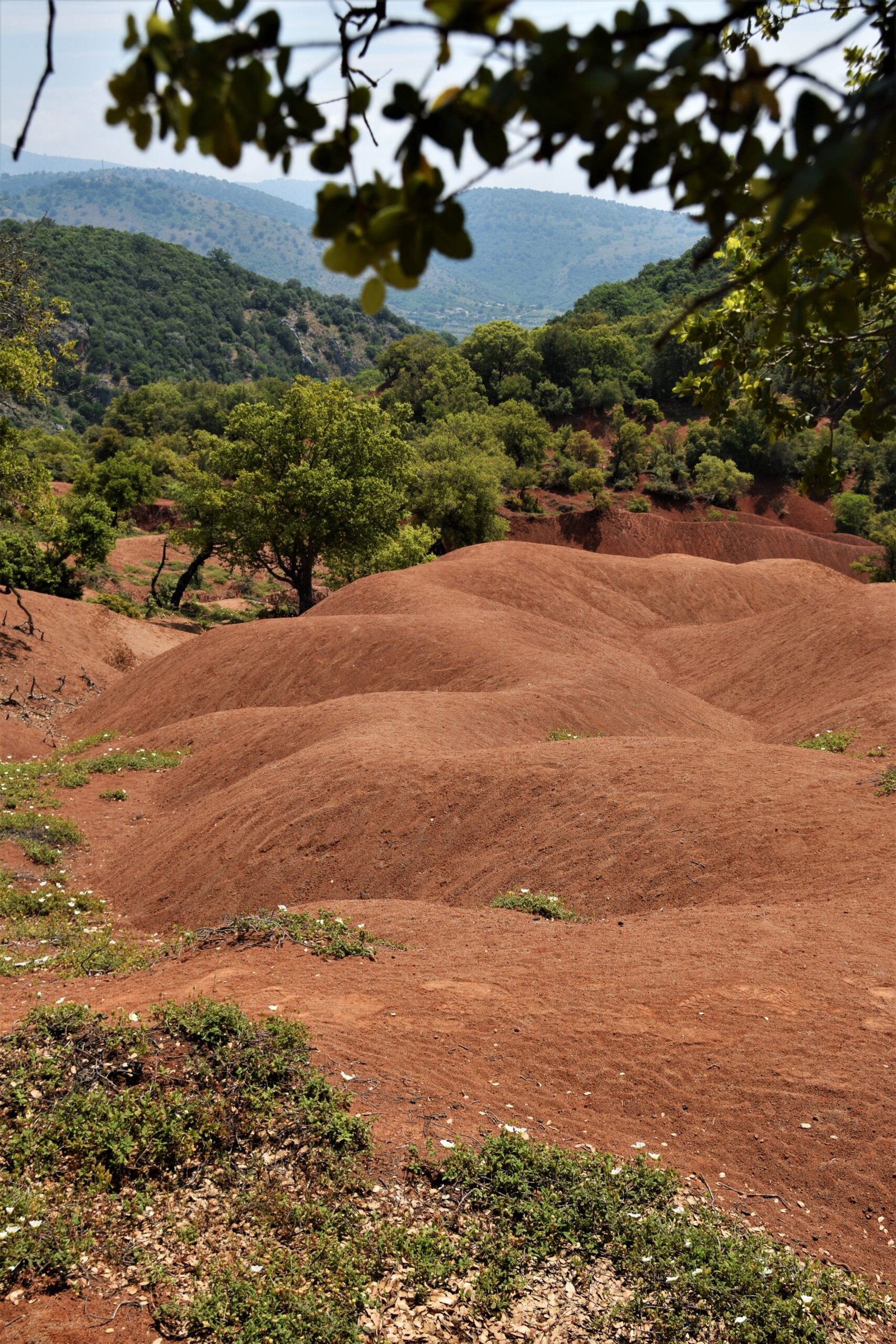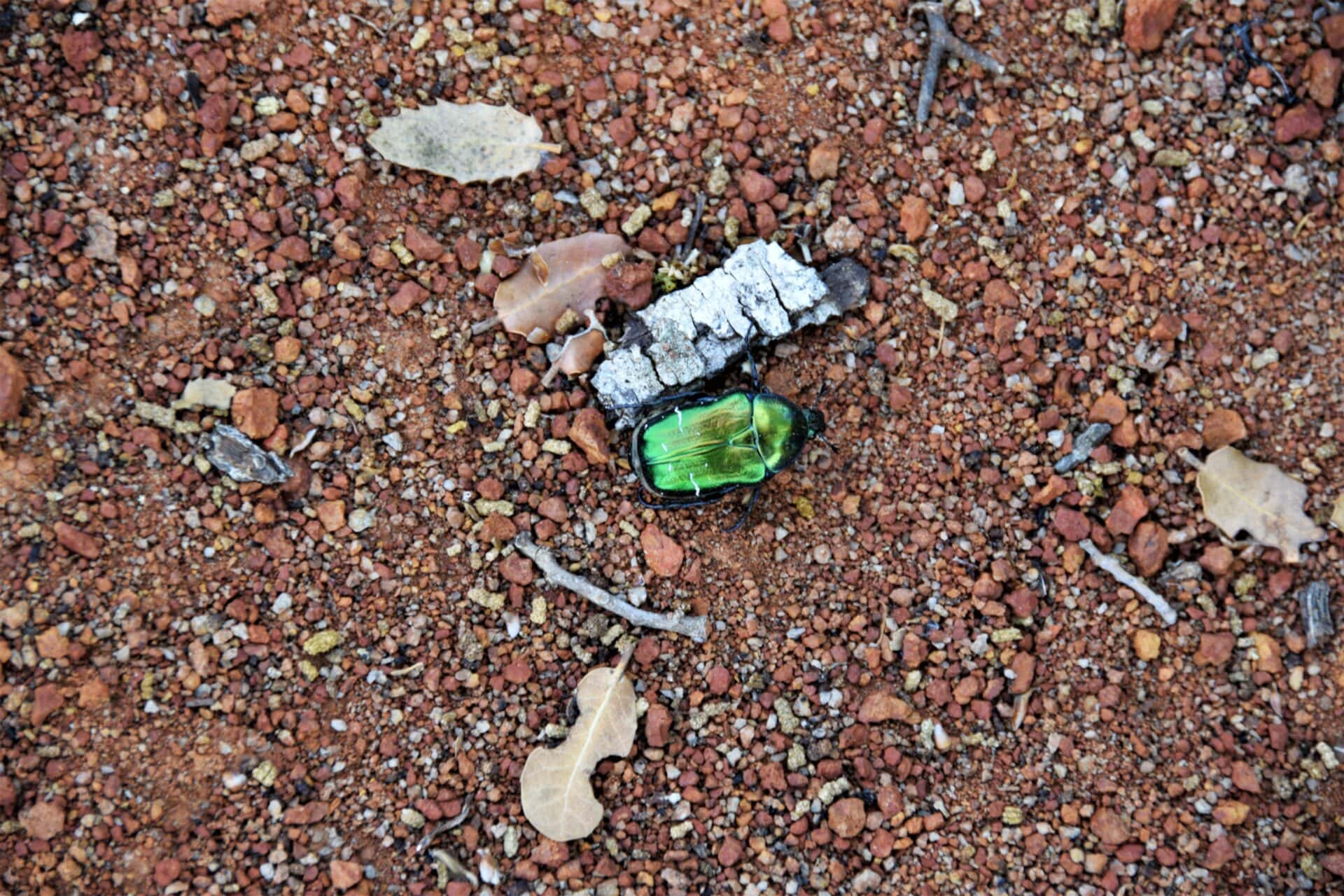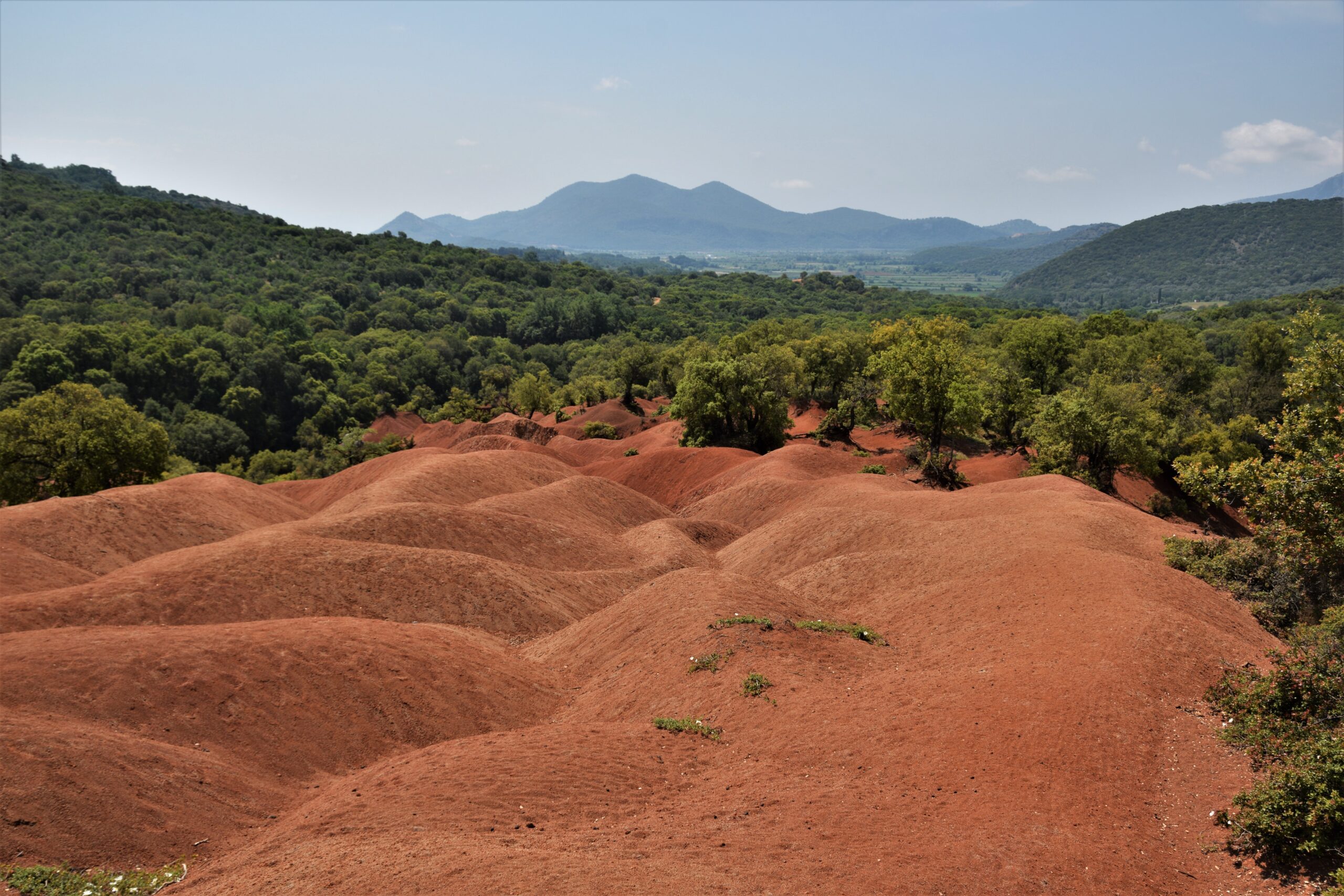Epirus is anything but shy of natural marvels. From the epic depths of Vikos, to the majestic peaks of Tymfi, and the perfection of Drakolimni, Greece’s northwest is wild and uncharted. However, in the region’s south hides a truly peculiar geological formation: the rubicund hills of Kokkinopilos.
Named after their striking colour (literally meaning “red clay”), these unusual hills might well leave you wondering whether you are still in Greece or got randomly cast into the vast wilderness of the Australian outback.
Formed over thousands of years by heavy rainfall characteristic for the area, dozens if not hundreds of immaculate crests and ridges meander down the exposed slopes before diverging and losing themselves in a verdant ocean. Lonesome trees balance precariously on these terrestrial spines, their tangled roots jutting from the eroded ground relentlessly stolen away by the elements. Occasional wildflowers and bleached stones embellish the reddish soil, while emerald beetles, their hardened carapaces glistening in the radiant sun, fill the air with constant hum.
A minimalistic painting in red and green, yet plentiful in its frugality.



Also known for her outstanding archaeological value, several incredible artifacts have been excavated from Kokkinopilos’ red earth, many of which are now displayed in the Archaeological Museum of Ioannina, including a 250.000-year-old stone axe from the Paleolithic Age.
The hills are equally crossed by a Roman aqueduct, which crumbling remains can also be visited a bit to the north.
Kokkinopilos is pretty extensive and you might spend quite some time exploring. The slopes are suprisingly pleasant to walk on, however, once the rain starts falling the area transforms into a mad mud mayhem, thus schedule your visit accordingly. In any case, climb to the top to be rewarded with sensational views of this Martian landscape!
Entirely off the tourist trail (I was completely alone), Kokkinopilos is a stunning location in the already underrated region of Epirus.
Location | The site is marked as “Kokkinopilos Preveza” on Google Maps. You won’t find it on maps.me, however.


HOW TO GET THERE
From Ioannina | Kokkinopilos is fairly remote, however, reaching this unique place from Ioannina can be relatively uncomplicated.
From Ioannina’s main bus station take the bus to Filippiada. Since Kokkinopilos is located 7km north of Filippiada, near the village of Agios Georgios and the Louros reservoir, you want to get off the bus early, though. I simply asked the driver to let me exit a bit south of the lake (there is a small lay-by on the left side). Although he was a bit confused to why I wanted to get dropped off in the middle of nowhere, he eventually stopped the bus. Obviously there is no guarantee that every driver will do that.
Now head towards Filippiada for a few minutes. You will soon spot a gated crevice on the right side (the former Roman aqueduct). The entrance point to Kokkinopilos is situated just a bit further down the road.
From Arta/Preveza | Either get to Filippiada and walk/hitchhike/take a taxi the remainder of the way or take a bus towards Ioannina and get off as described above.
Return to Ioannina | Since you will be 7km from the next bigger town (Filippiada) make sure to leave ample time for the return journey. Buses are relatively infrequent, especially later in the day, so make sure to check the schedule beforehand.
Also, while there is buses from Ioannina to Filippiada, I am not sure if they run the other way round. Buses between Arta/Preveza and Ioannina might stop in Filippiada, however, if that isn’t the case, you wanna get to Arta and take a bus back to Ioannina from there.
Alternatively, you can always try your luck hitchhiking. I haven’t had any troubles hitchiking in Greece on several occasions, although I’ve heard from many that they found Greece not to be the most hitchhiker-friendly country.
You can find the latest bus schedule here.
